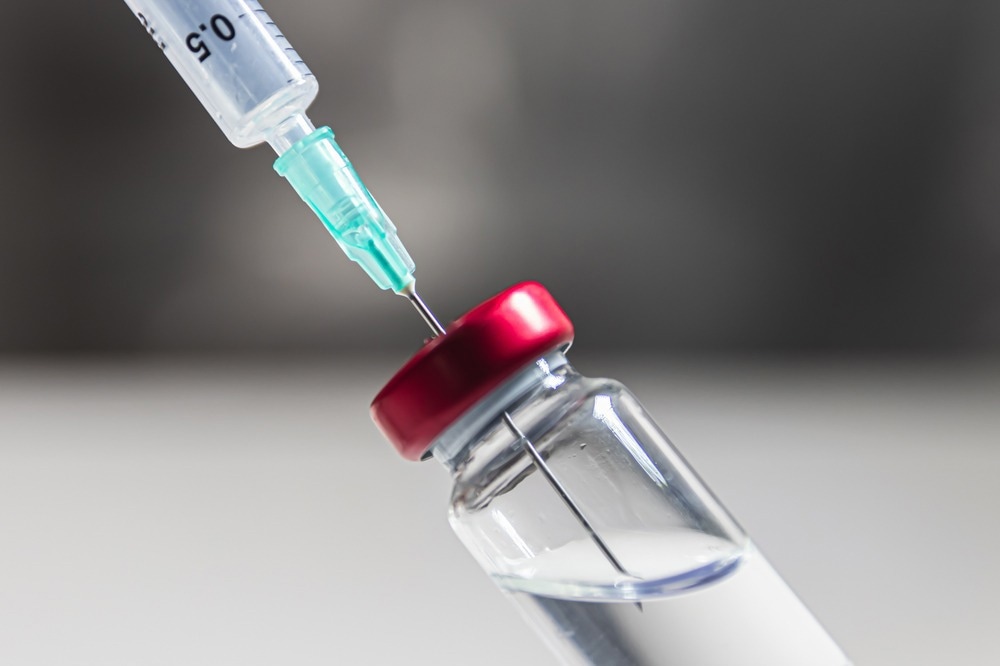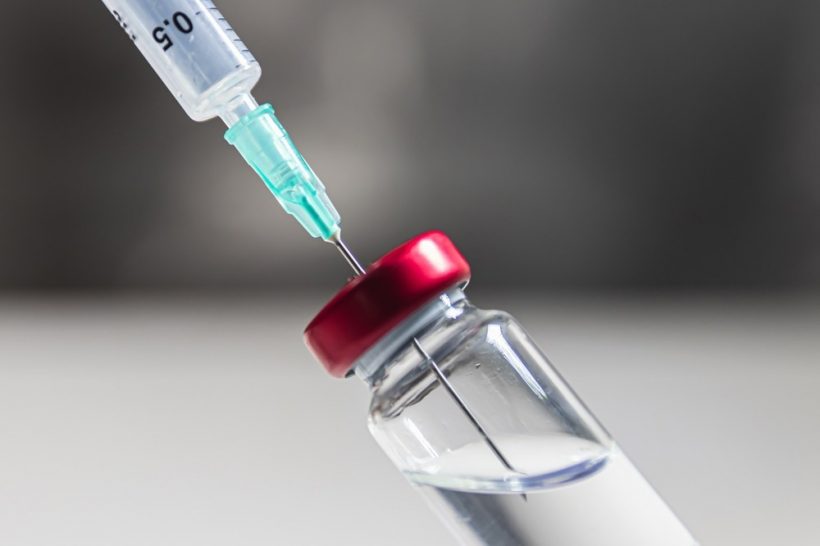In a recent study published in The New England Journal of Medicine, researchers perform two randomized controlled trials (RCTs) in parallel among adults and children to gather immunogenicity and safety data for three vaccines used to prevent Zaire Ebola virus disease (EVD).

Study: Randomized Trial of Vaccines for Zaire Ebola Virus Disease. Image Credit: javirozas / Shutterstock.com
Antibodies eBook

Additionally, they assessed how quickly and robustly these vaccines elicited antibody responses in people comprising these cohorts. Both RCT studies followed the protocol of the Partnership for Research on Ebola Vaccinations (PREVAC) consortium in western Africa.
The researchers tested the adenovirus type 26–vectored vaccine that encodes the Ebola glycoprotein ZEBOV (Ad26.ZEBOV-GP), as well as a booster dose of the modified vaccinia Ankara (MVA)-BN-Filo follows after 56 days and the recombinant vesicular stomatitis virus (rVSV)ΔG-ZEBOV-GP vaccine.
Background
The World Health Organization (WHO) has approved some Ebola vaccines; however, they are typically administered only to people at high risk during Ebola outbreaks. To date, most studies have not been able to find a robust correlate of immunity to EVD following vaccination. Some studies have shown that Ebola glycoprotein-binding antibody titers correlate with neutralizing antibody titers in primate models and humans.
Another clinical trial testing a single dose of rVSVΔG-ZEBOV-GP increased the neutralizing antibody concentration by a factor of two or more from the baseline, which seems like a fitting correlate of protection conferred by this vaccine. However, studies quantifying post-vaccination antibody titers have shown considerable temporal variability in the results. An analysis based on immunogenicity data could help better evaluate EVD vaccination strategies.
About the study
In the present study, researchers performed an RCT where they randomized 1,400 adults and 1,401 children and divided them into the Ad26-MVA, rVSV-booster, and rVSV groups to gather immunogenicity, safety, and durability data for the Ad26.ZEBOV-MVA-BN-Filo combination and the rVSVΔG-ZEBOV-GP vaccine.
All study participants, children between one to 17 years old, and adults 18 years and older, did not have a history of EVD and were enrolled from six regions of four West African countries.
The Ad26-MVA group received 0.5ml of the Ad26.ZEBOV vaccine, followed by 0.5 ml of the MVA-BN-Filo vaccine booster 56 days later. The rVSV group received 1 ml of the rVSVΔG-ZEBOV-GP vaccine and then a placebo.
The team used two placebos that were administered 56 days after the vaccine to compensate for the different vaccine volumes used in the study. The team arranged follow-up visits on days seven, 14, and 28 following the first vaccination/placebo.
An additional follow-up visit was scheduled on day 63, as well as months three, six, and 12. The researchers assessed antibody response to the vaccines at each visit, whereas other vaccine effects, such as symptoms, fever, headache, and injection-site reactions, were reported through month six. Information regarding serious adverse events post-vaccination through month 12 was also collected.
Further, the team evaluated the immediacy of antibody responses on day 14 separately for the rVSV∆G-ZEBOV-GP and Ad26.ZEBOV-MVA-BN-Filo vaccine regimens with placebo. For RCT involving children, prespecified subgroup analyses stratified by age groups, one to four years, five to 11 years, and 12 to 17 years were performed.
Enzyme-linked immunosorbent assay (ELISA) was used to measure serum concentrations of immunoglobulin G (IgG) binding antibodies against ZEBOV. The primary immunogenicity endpoint was an antibody response of a minimum of 200 ELISA units (EU) per milliliter (ml) at month 12, as well as an increase in the antibody concentration by a factor of four from baseline.
Finally, the researchers used odds ratios (ORs) with 95% confidence intervals (CIs) to compare the proportion of participants with an antibody response between each vaccine and placebo at all follow-up visits. Geometric mean ratios for each vaccine as compared to the placebo were also reported, in addition to 95% Cis.
Study findings
At baseline, 15% and 12% of adults and children, respectively, had an antibody concentration of a minimum of 200 EU per ml per the immunogenicity endpoint data captured for over 90% of the adults and children.
Seven days post boosting, and at month three, the percentages of participants with an antibody response was the greatest in the Ad26-MVA and rVSV-booster groups. By one year, these levels returned to the baseline levels.
Seven days post-vaccination, the incidence of injection-site reaction in the Ad26-MVA group, pooled rVSV groups and the placebo groups were 9%, 22%, and 5%, respectively. Likewise, 50%, 66%, and 44% of participants reported symptoms through day seven. There were reports of a few serious adverse events in children and adults; however, these were unrelated to the vaccine or placebo.
Consistent with previous data, the researchers observed higher antibody concentrations with the Ad26-MVA and rVSV vaccines in children than in adults, with notable differences in the kinetic features of antibodies in children vaccinated with rVSVΔG-ZEBOV-GP compared to adults.
No safety concerns in adults or children were reported. The side effects, if any, were only mild to moderate in intensity and diminished with time. Yet, clinicians have restricted the use of the rVSVΔG-ZEBOV-GP vaccine to adults.
Conclusions
Overall, the current study data add to existing information on the immunogenicity and safety of all three vaccines tested against EVD in adults and children. These vaccines elicited adequate antibody titers starting 14 days, which remained persistent for up to a year. Most importantly, all three vaccines had a good safety profile in children as young as one year, whose overall immune responses were better than adults.
- PREVAC Study Team. (2022). Randomized Trial of Vaccines for Zaire Ebola Virus Disease. The New England Journal of Medicine. doi:10.1056/NEJMoa2200072
Posted in: Drug Trial News | Medical Research News | Disease/Infection News | Pharmaceutical News
Tags: Adenovirus, Antibodies, Antibody, Assay, Children, Clinical Trial, Ebola Virus Disease, ELISA, Enzyme, Fever, Glycoprotein, Headache, immunity, Immunoglobulin, Placebo, Research, Stomatitis, Vaccine, Virus

Written by
Neha Mathur
Neha is a digital marketing professional based in Gurugram, India. She has a Master’s degree from the University of Rajasthan with a specialization in Biotechnology in 2008. She has experience in pre-clinical research as part of her research project in The Department of Toxicology at the prestigious Central Drug Research Institute (CDRI), Lucknow, India. She also holds a certification in C++ programming.
Source: Read Full Article






